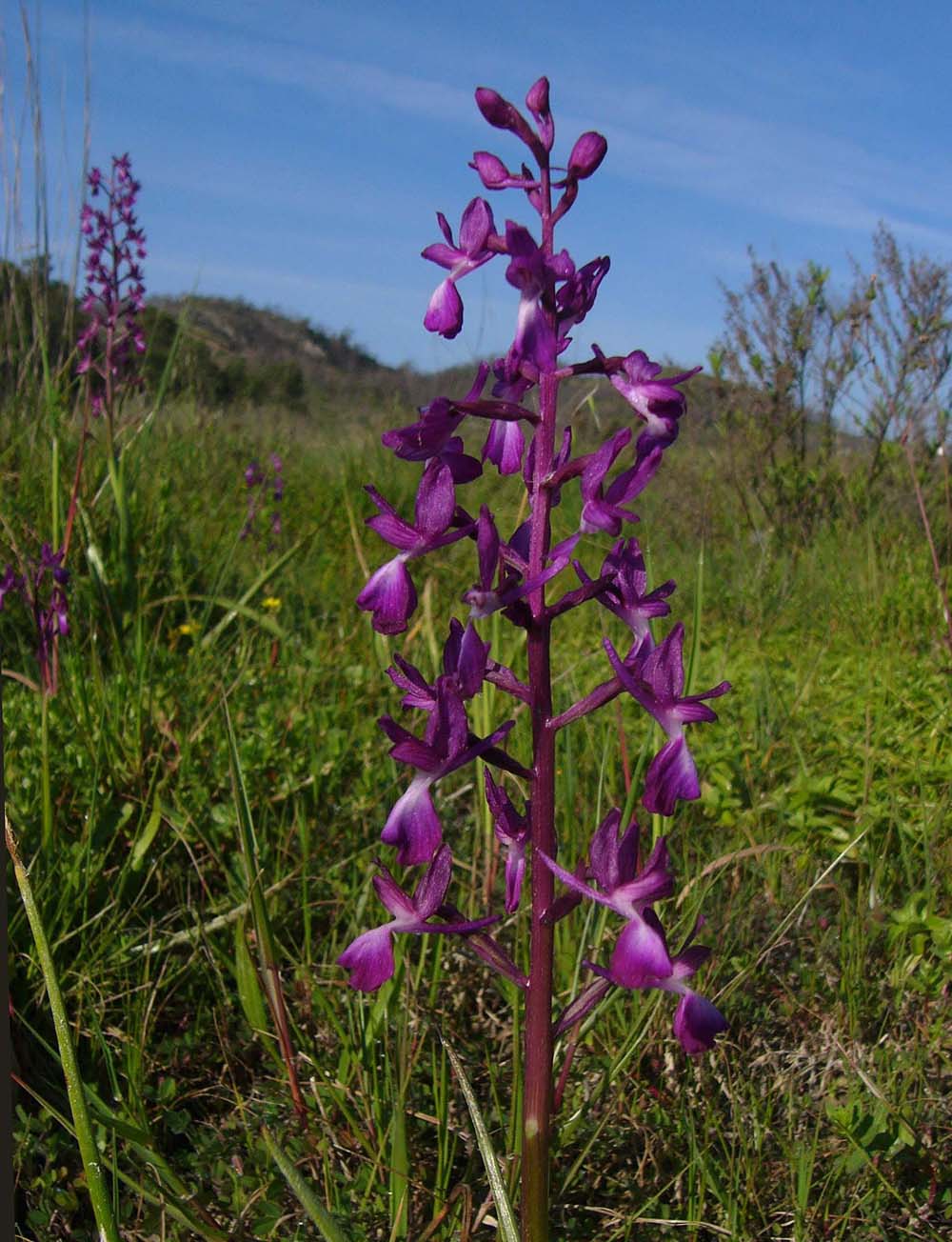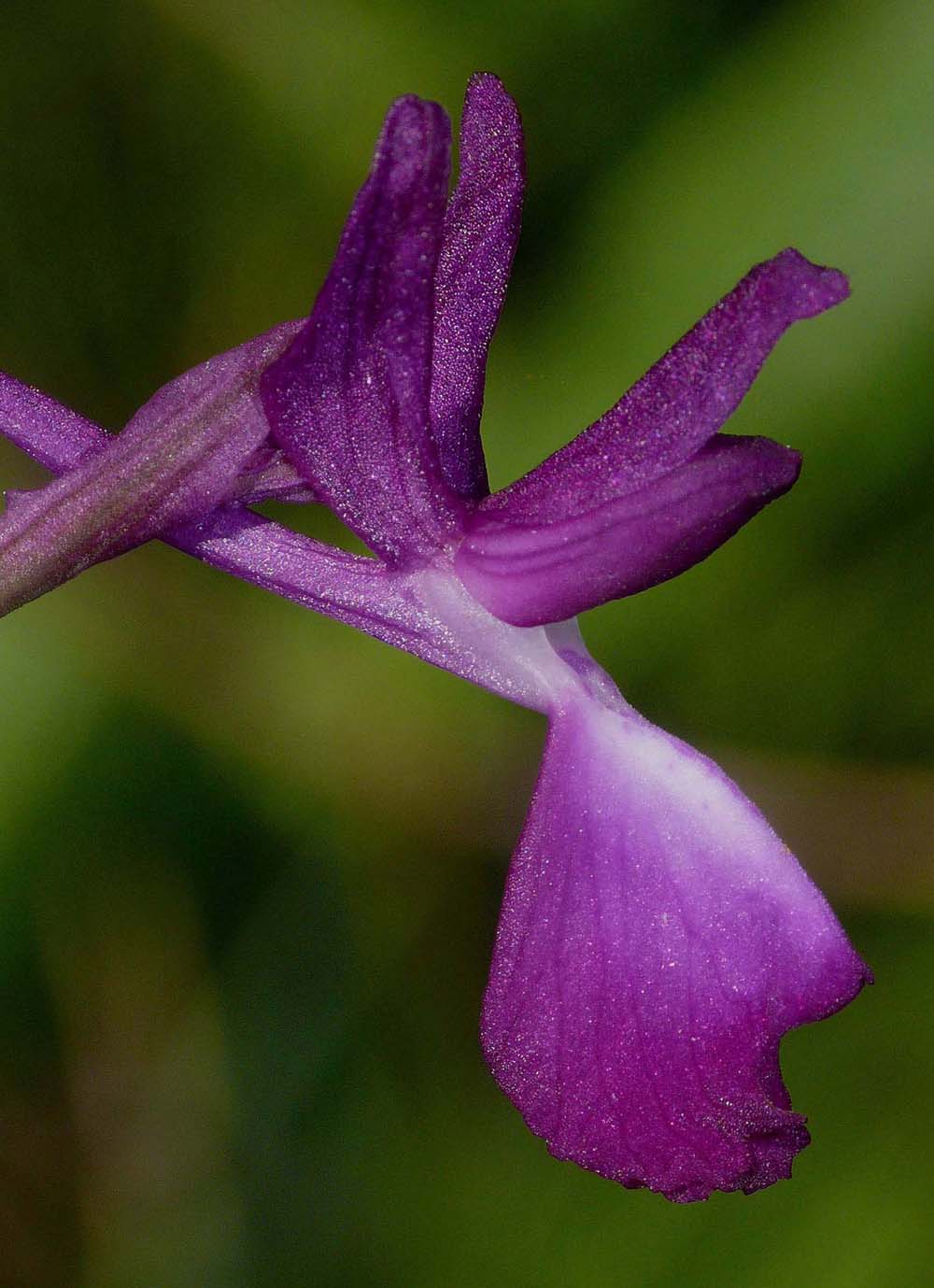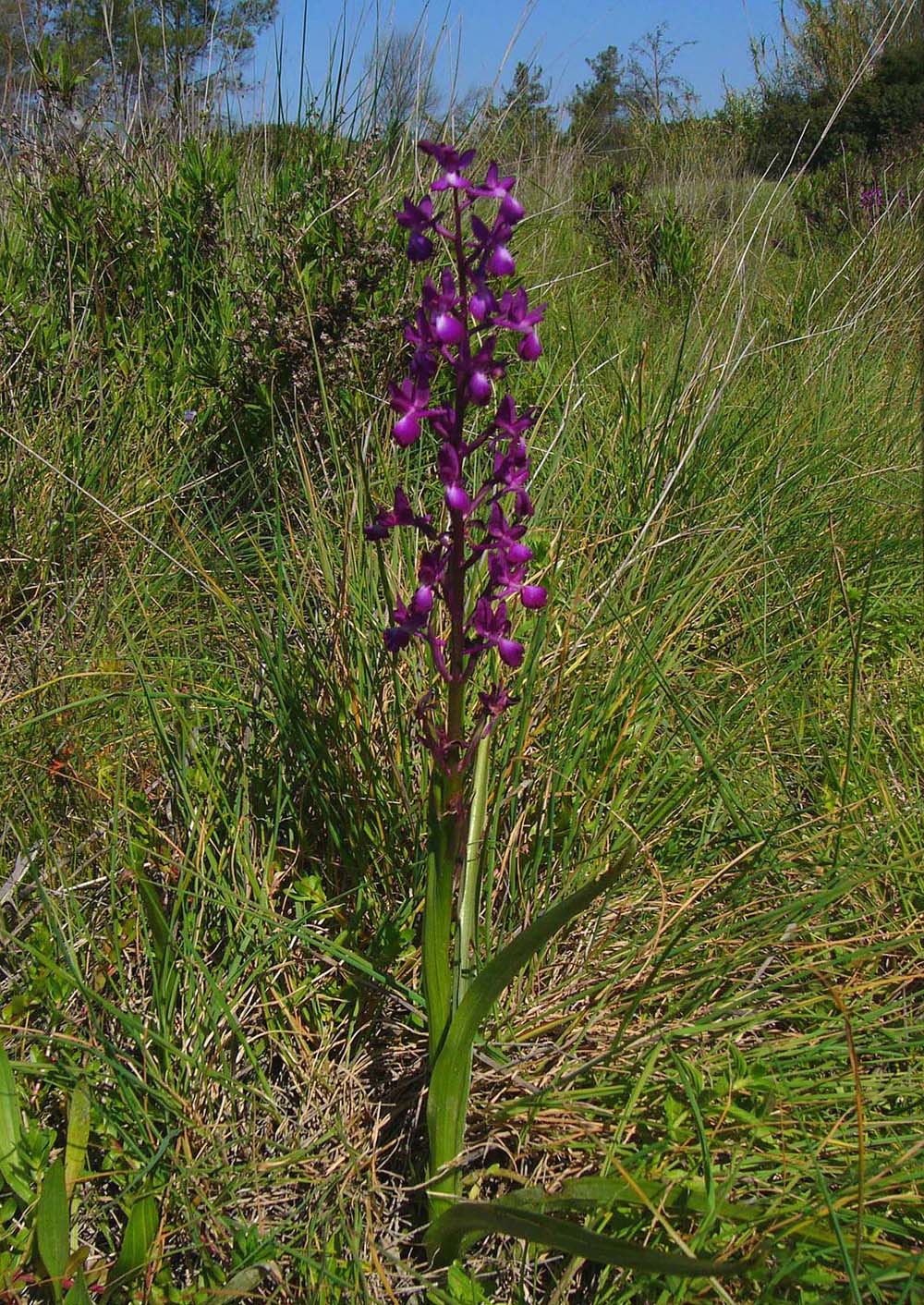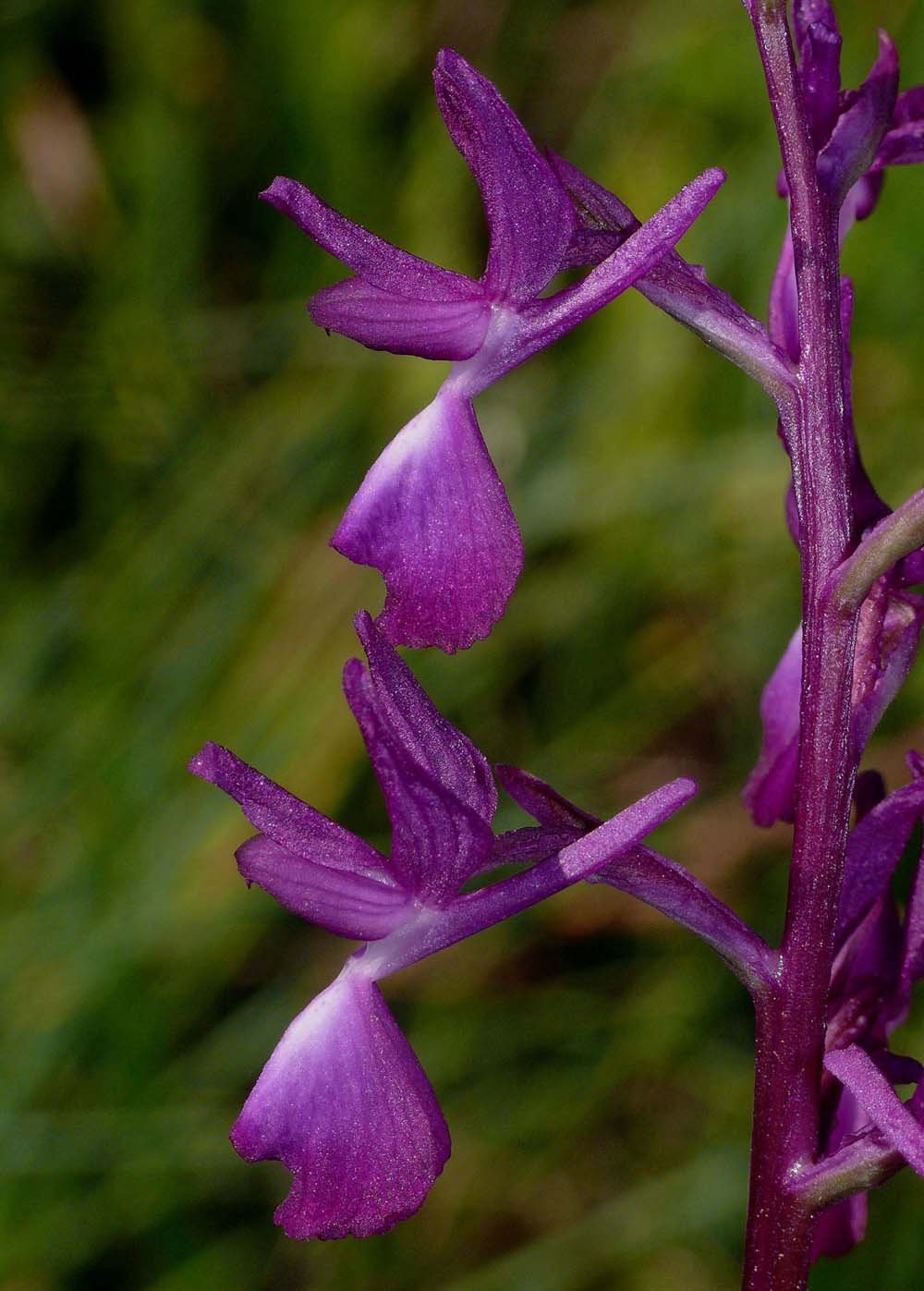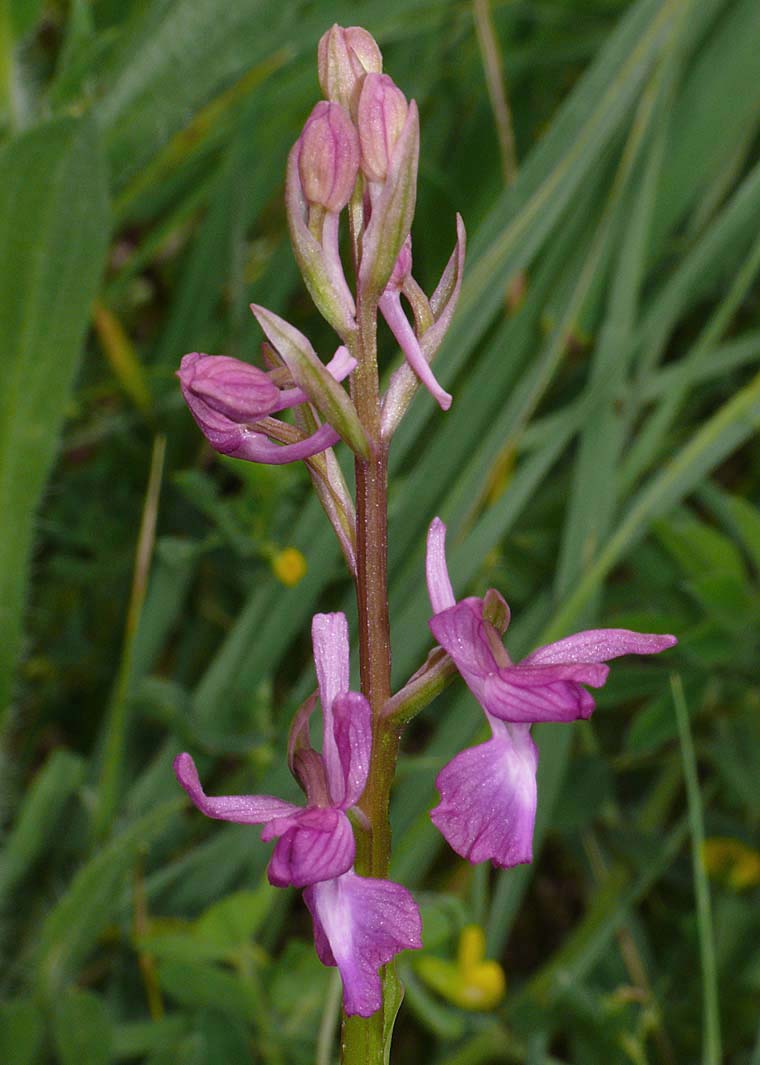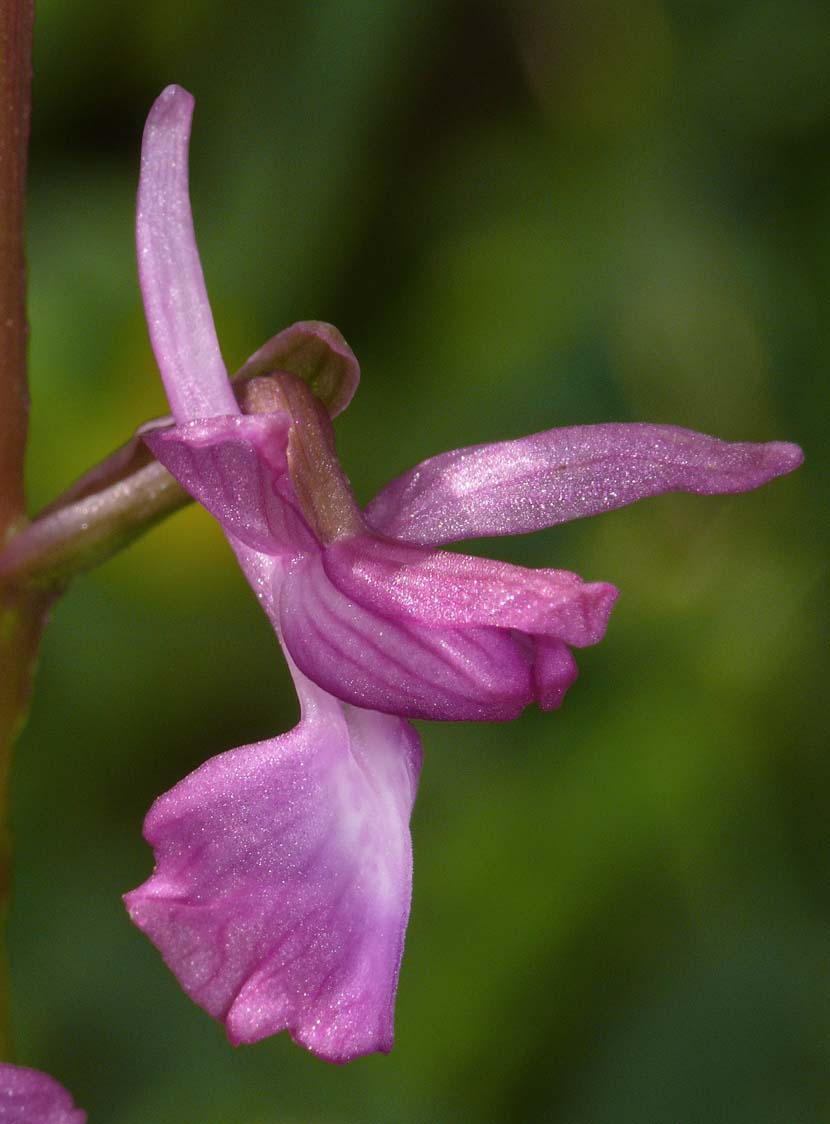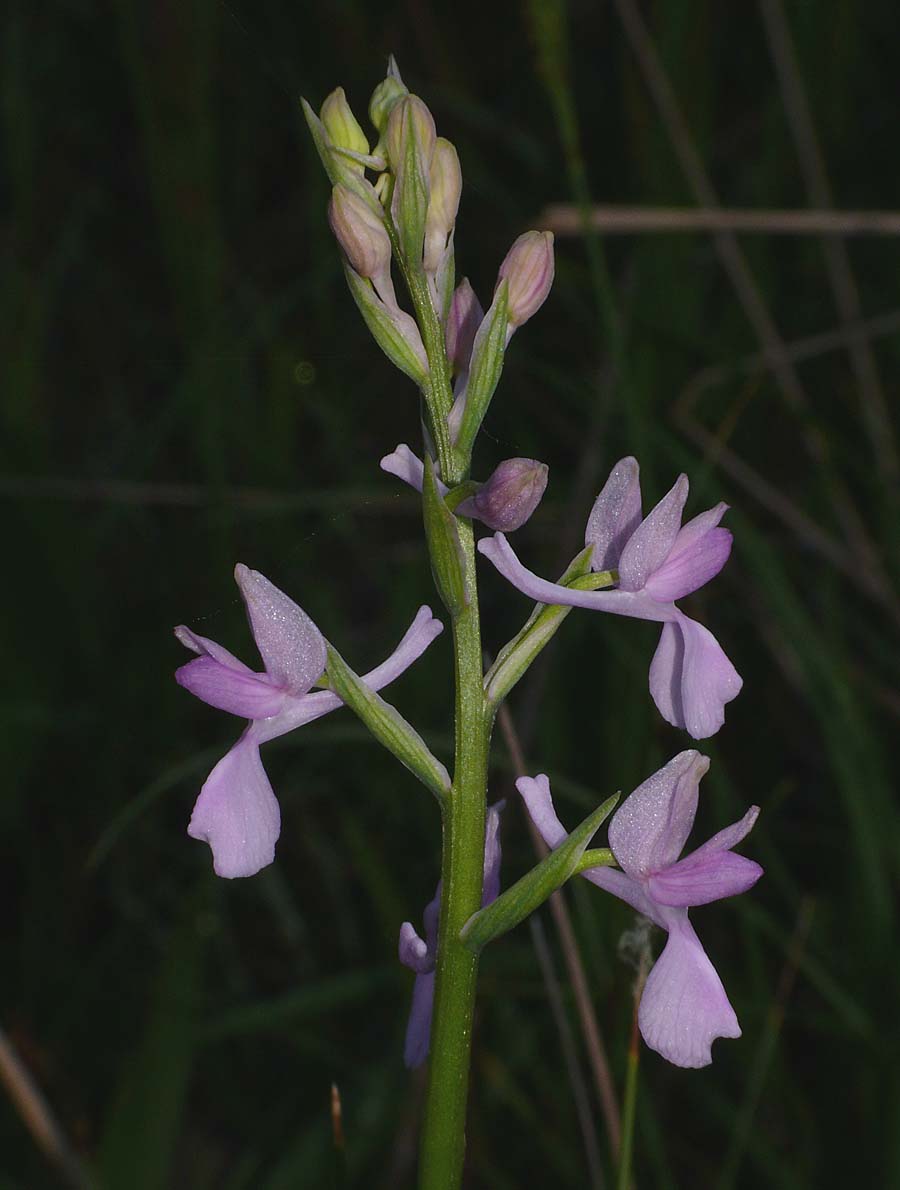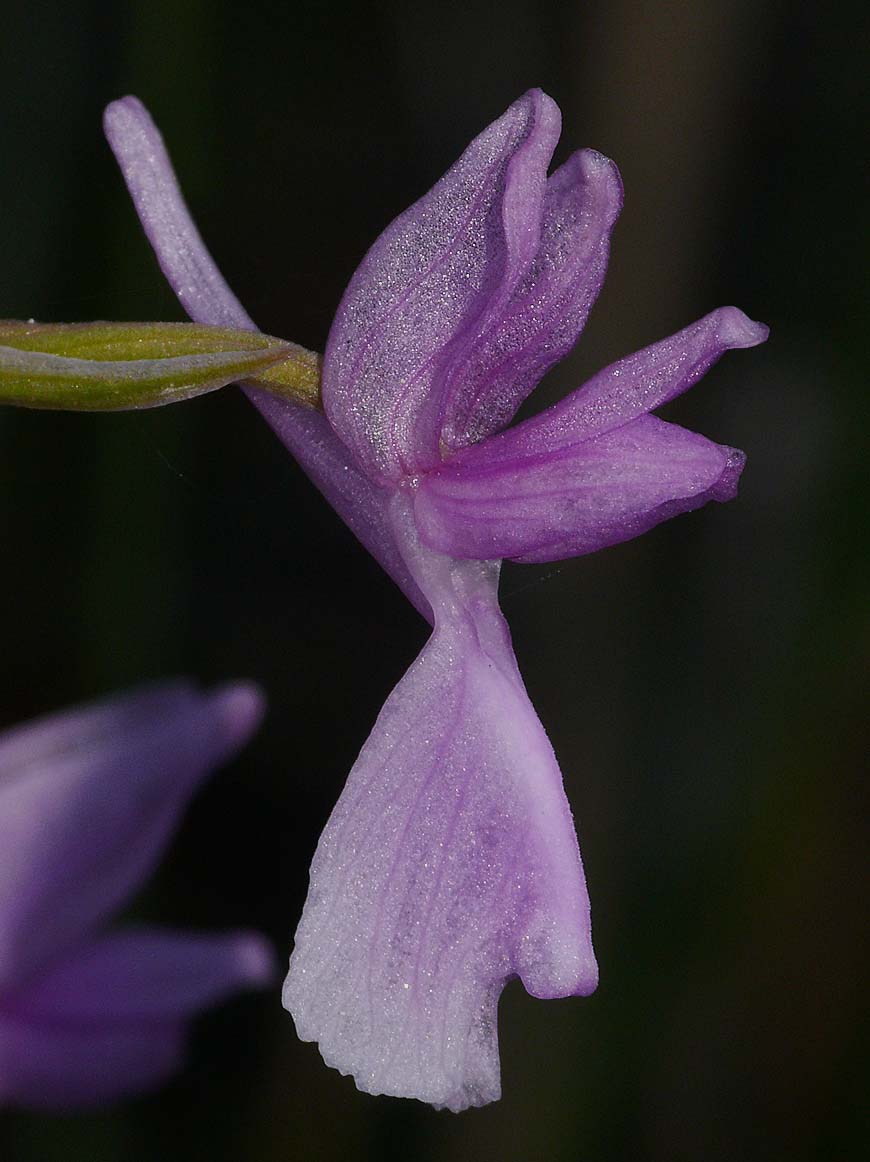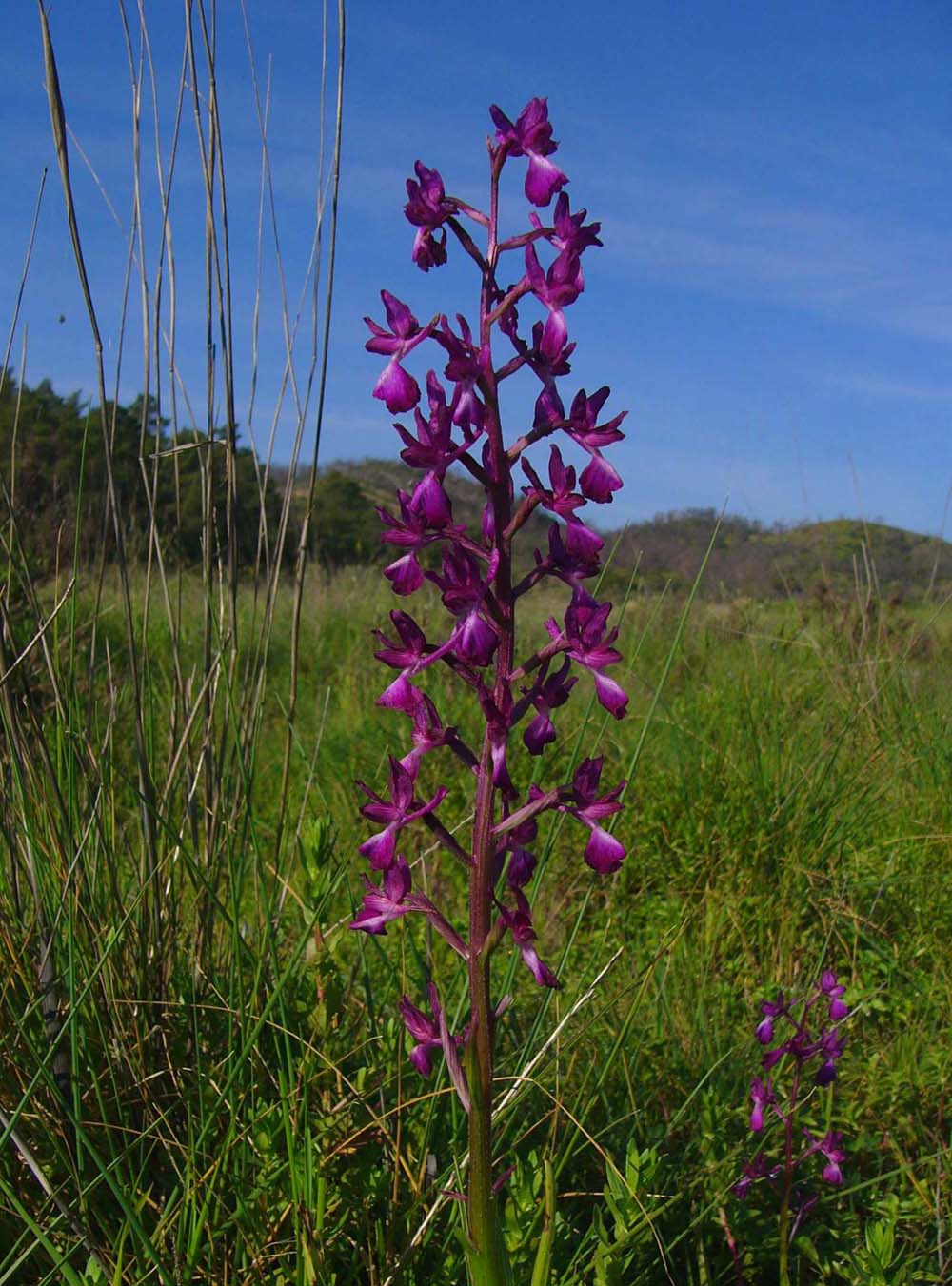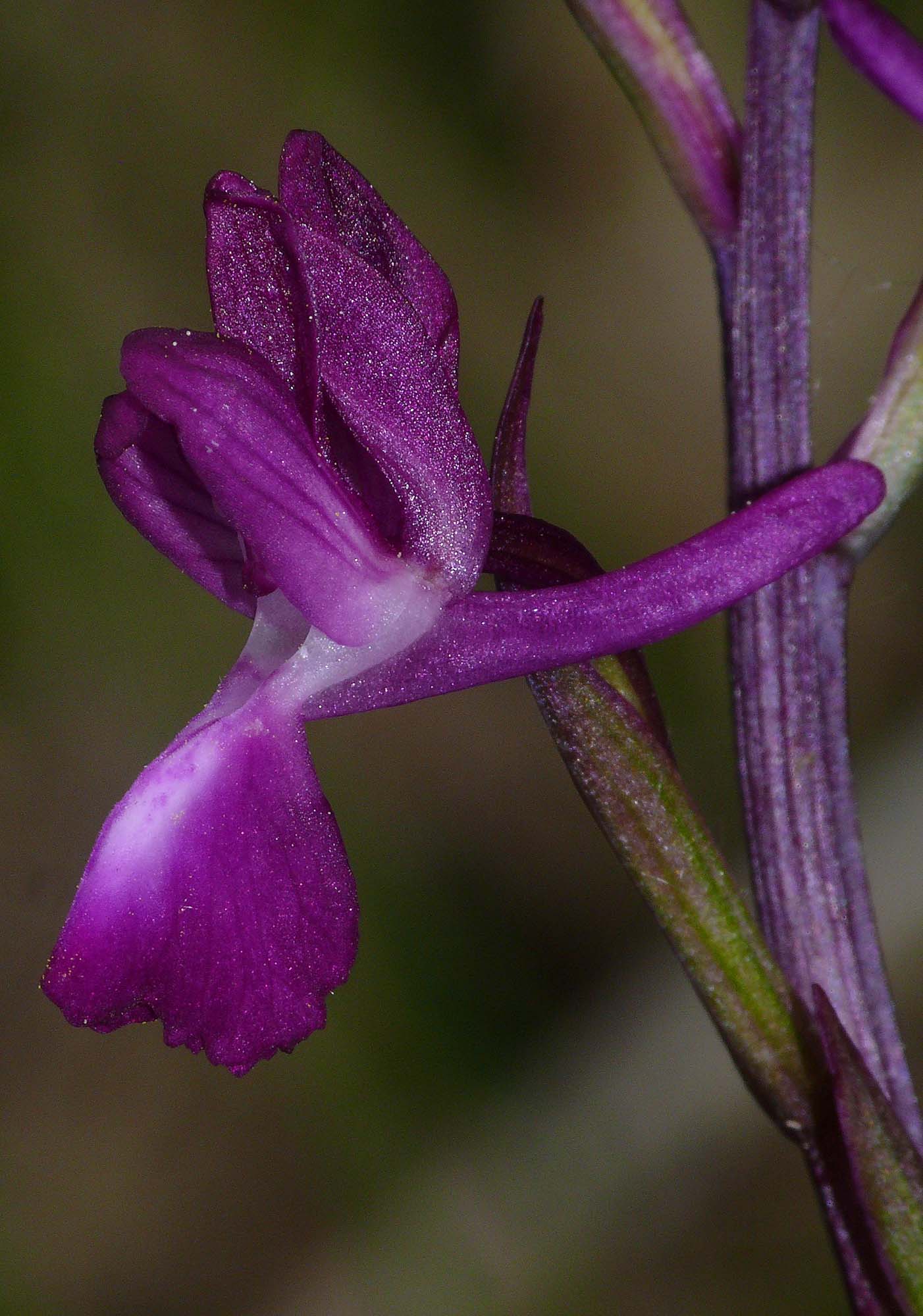O. laxiflora
was first described from a site near Paris by Lamarck as long ago as
1778. Its name refers to the loose appearance of the inflorescence,
although this characteristic is somewhat unreliable, being distinctly variable between populations.
Regrettably this once abundant orchid is becoming
scarcer by the year as its favoured habitat is drained or adapted in
poorer economic areas for subsistence agriculture. Loss of habitat to tourist development is also a significant pressure.
The distribution of A. laxiflora is
large and covers much of the Mediterranean and Atlantic, including a
small
northerly UK population in the Channel Islands (adjacent to the coast of north
western France), in the east it's range takes it as far as Anatolia.
Although as has already been mentioned, the size and density of the
inflorescence can be variable, it is otherwise rather consistent in its appearance and there are few other orchids
with which it may be confused. A possible exception to this is A. palustris
which has a similar distribution but is less dependent on damp
soil conditions. Distinguishing the two is usually
straightforward in that the flower of A. laxiflora is much darker and the lip more strongly reflexed. Colouration in A. laxiflora
can however vary and as illustrated below, will rarely throw up
morphs in pink or lilac. The latter form is known only from a small
colony in the Epirus region of northern Greece.
A. laxiflora has a long Europe wide flowering period reflecting its extensive distribution. The pictures date from the first week of April in the Aegean and the first week of May in Liguria, Italy.
